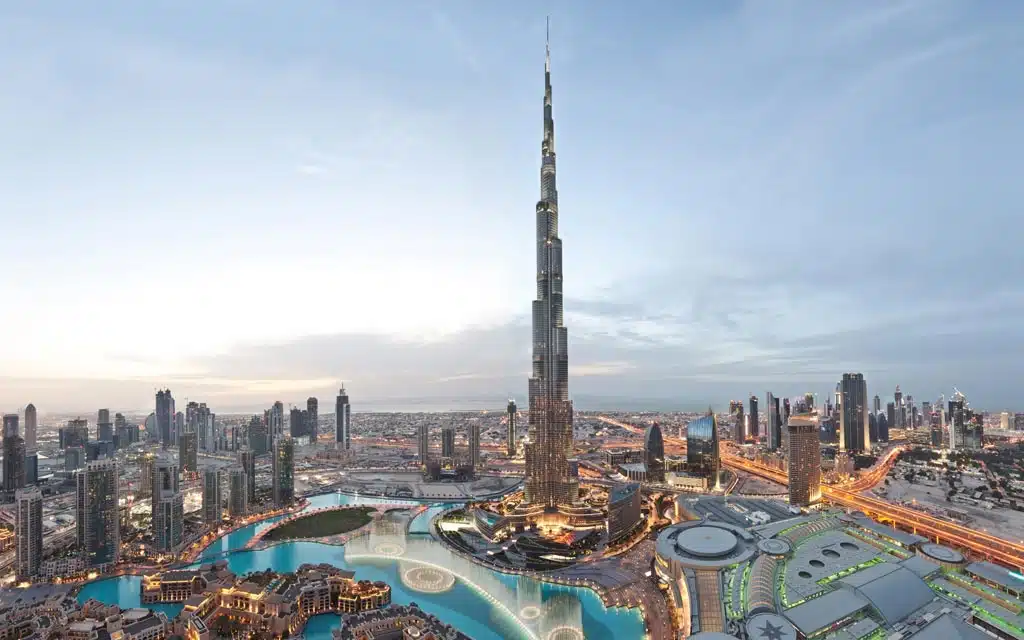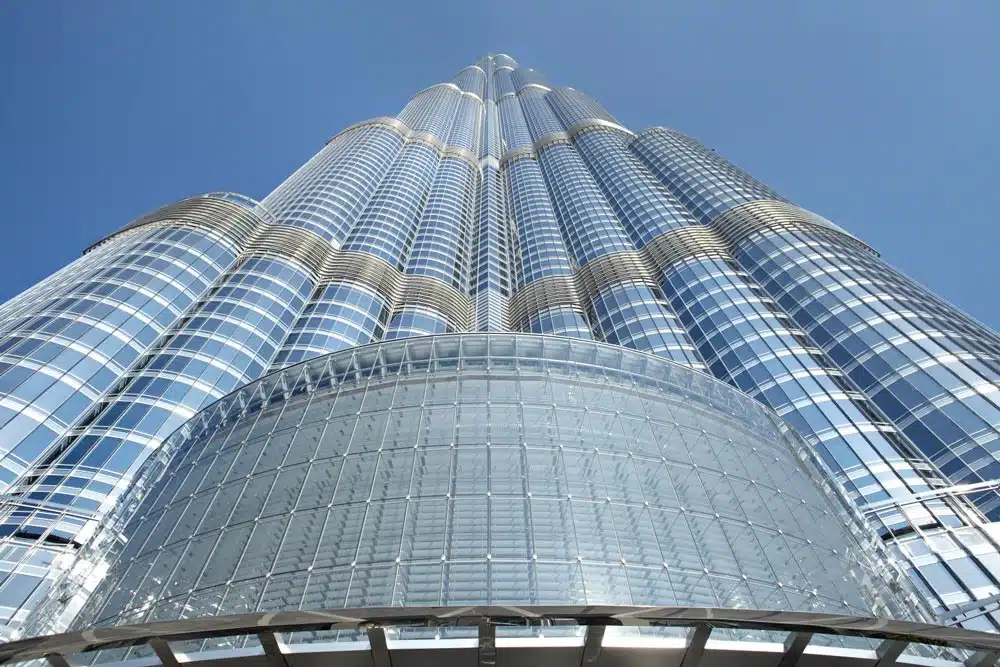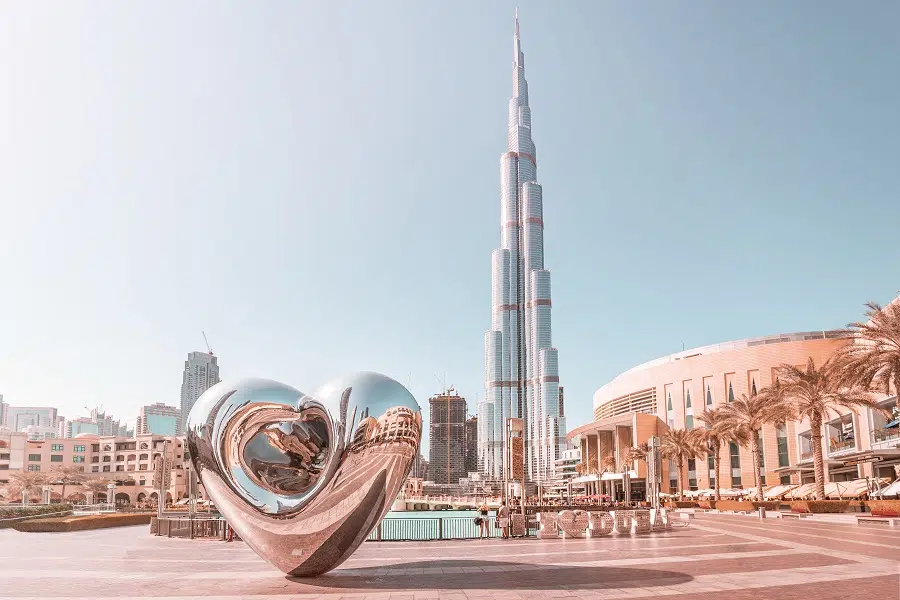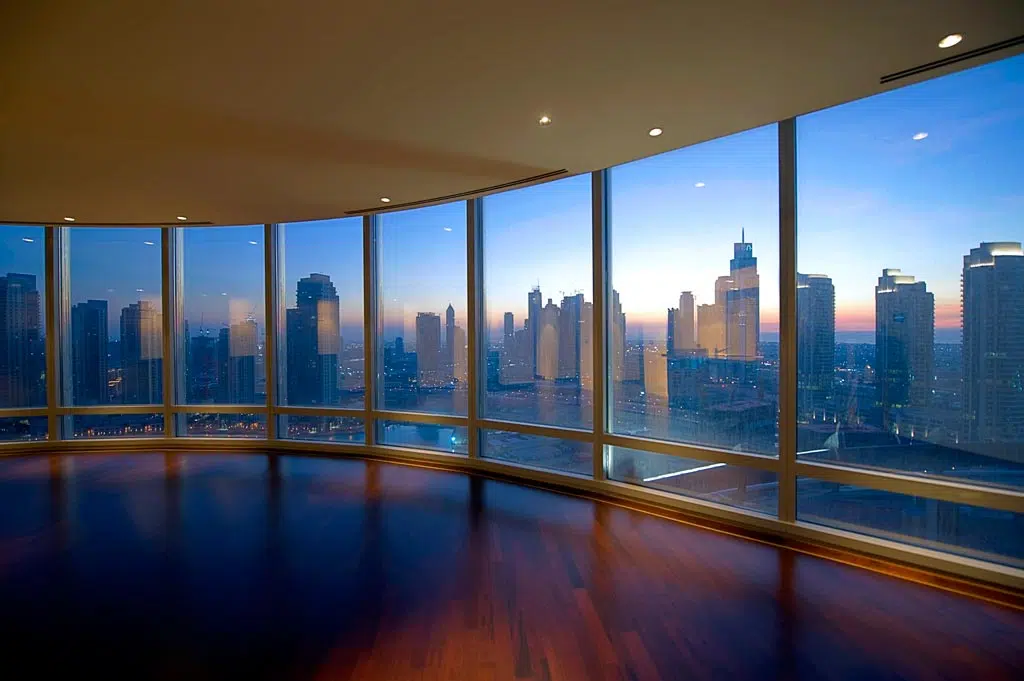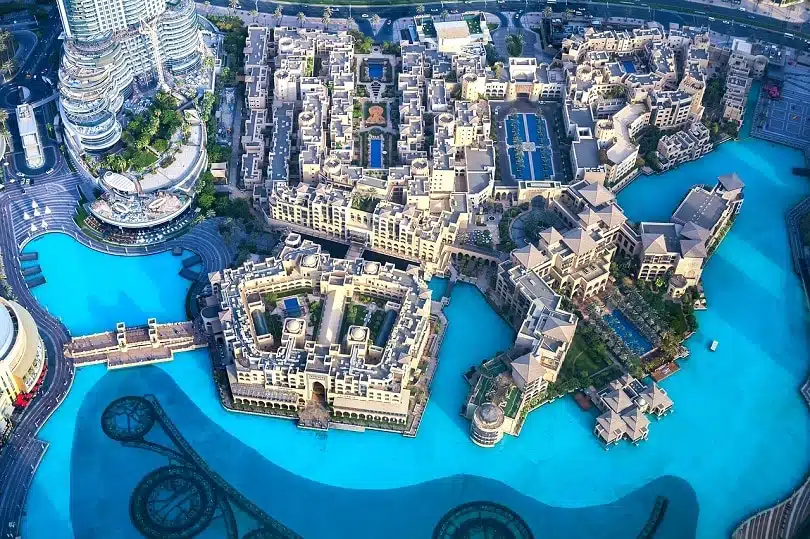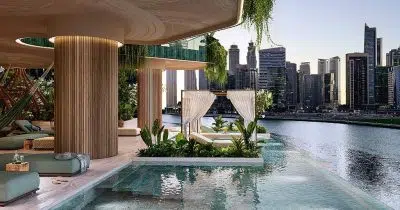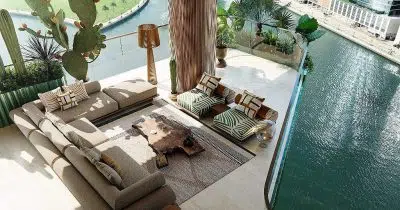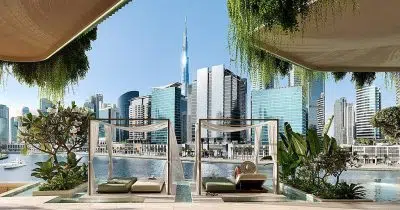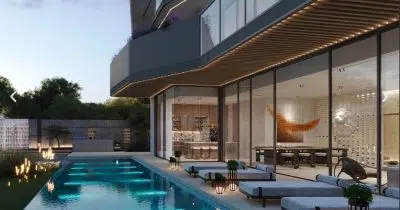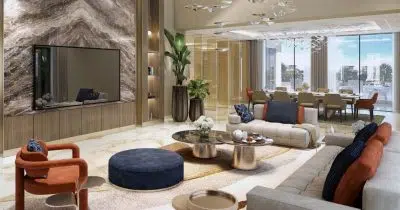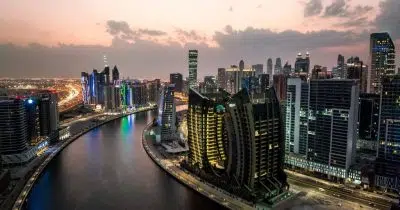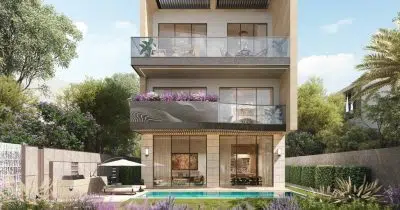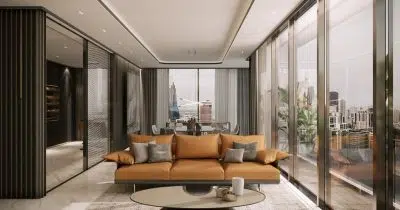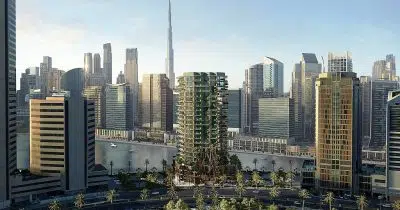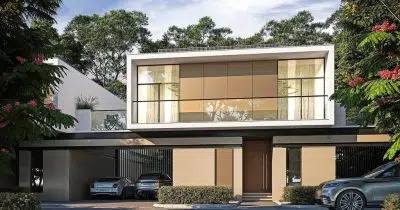The Burj Khalifa of Dubai is the pride of the UAE architectural world and real estate market. The towering skyscraper instantly attracts attention because the Burj Khalifa is the world’s tallest building, as confirmed by the Guinness World Records and holds the record as the world’s tallest freestanding structure.
The innovative structure serves as a mixed-purpose building for Dubai containing residential and office space and various amenities such as restaurants, observation decks, and a hotel. There is nothing shy about Burj Khalifa, making the building the top tourist attraction in Dubai. Luxurious interiors of the world’s tallest building include high-end hotels, offices, and residential spaces, that helped establish the Burj Khalifa as an iconic building.
About the Burj Khalifa – The World’s Tallest Building
Quick Summary – Interesting Facts About the Burj Khalifa
- Height: The Burj Khalifa’s height is 828 meters (2,722 feet) tall, making it the tallest building in the world.
- Construction: Construction began in 2004 and finished in 2009.
- Architect: The American architecture firm Skidmore, Owings & Merrill designed the Burj Khalifa/
- Cost: The cost of constructing the Burj Dubai was estimated to be around $1.5 billion.
- Purpose: The Burj Khalifa building is mixed-use with residential, office, and hotel spaces.
- Elevators: The Burj Khalifa has 57 elevators, including the world’s fastest elevator, which can reach speeds of up to 10 meters per second.
- Observation Deck: The Burj Khalifa has an observation deck on the 148th floor, offering stunning Dubai city views.
- Records: The Burj Khalifa holds several records, including the tallest freestanding structure in the world, the tallest building in the world, and the world’s highest-occupied floor.
- Sustainability: The Burj Dubai was designed to be a sustainable building with energy-efficient systems, water-saving technologies, and environmentally friendly materials.
Where is the Burj Khalifa in Dubai?
The Burj Khalifa is in Downtown Dubai, a significant mixed-use development and thriving community and also home to the Dubai fountain, and Dubai Mall, one of the world’s largest shopping centres. Downtown Dubai is a hub for business, tourism, and entertainment, offering a wide range of residential, commercial, and retail spaces, attractions and cultural venues. The development is home to a diverse community of residents and visitors, making it a vibrant and cosmopolitan area with a rich cultural heritage.
Burj Khalifa Offices and Work Spaces
The Burj Khalifa features lower-level office space, with easy access to the building’s elevators and parking facilities. Many offices have panoramic views providing unique and inspiring work environments. Their various layouts suit different businesses and work environments, from individual offices to sizeable multi-level floor plates.
In addition, the building’s office spaces include modern amenities, like high-speed internet, air conditioning, and state-of-the-art lighting and electrical systems. Overall, office spaces in the Burj Khalifa of Dubai provide Middle Eastern businesses with modern, flexible, and inspiring work environments alongside convenient amenities and services.
Burj Khalifa Shopping and Entertainment
Burj Khalifa has a multi-level commercial or retail structure providing visitors with various shopping, dining, and entertainment options. Retail space sits on several floors with easy access from the street and building elevators. Many retail areas have panoramic views, providing a unique and attractive shopping environment, and flexible retail space includes various floor plans and layout options, from small individual storefronts to large multi-level areas to suit different retail concepts and businesses.
In addition, the building’s retail space includes various modern amenities, like high-speed internet, air conditioning, and state-of-the-art lighting and electrical systems. Overall, the retail structure provides Middle East visitors with diverse shopping, dining, and entertainment options in Dubai while offering a modern, commercial and retail design of tall buildings.
Burj Khalifa Observation Decks
The Burj Khalifa observation decks on the 124th and 148th floors offer 360-degree views of Dubai’s skyline, the Arabian Gulf, and the surrounding desert. The observation decks include modern amenities, like high-speed elevators, air conditioning, and interactive displays and exhibit about Dubai. To visit the observation decks, purchase tickets in advance or on-site.
Islamic Architecture in Dubai’s Tallest Building
The Burj Khalifa, owned by Emaar Properties, incorporates elements of traditional Middle Eastern and Islamic architecture in design, reflecting the region’s cultural and historical heritage. Some key features include
- Burj Khalifa incorporates Islamic calligraphy inscriptions of verses from the Quran.
- Intricate geometric patterns and designs appear in facades and interior spaces.
- Middle Eastern architecture often features open courtyards as a central element providing spaces for reflection and connection with nature.
- Islamic buildings often feature minarets, tall towers used for the call to prayer. Although the Burj Khalifa does not feature a traditional minaret, the height and prominence in Dubai interprets this traditional architectural element.
- Islamic architecture is known for intricate latticework, and the Burj Khalifa incorporates this element in the exterior wall and interior spaces.
Living in the Burj Khalifa of Dubai
The Burj Khalifa contains luxury residential units ranging from one to four bedrooms. The lower building-level apartments offer stunning city views and various amenities, including swimming pools, gyms, and parks. Each apartment also features high-end finishes, including marble floors, modern kitchens, and spacious living areas. The building also features state-of-the-art security systems, concierge services, and a business centre.
The Burj Khalifa apartments are highly sought after due to their prime location in Dubai, luxury amenities and breath-taking views. They are the world’s most luxurious and prestigious residential properties. The luxurious residential lobby on the ground floor welcomes residents and guests into the building. The Burj Khalifa lobby features elegant marble flooring, high ceilings, and floor-to-ceiling windows with stunning views.
It is beautifully decorated with modern art pieces and luxurious furnishings, creating a warm and welcoming atmosphere. The Burj Khalifa lobby also has a 24-hour front desk with a concierge to assist residents with any needs or inquiries. Residents can relax in the lounge areas or use other amenities like the coffee bar, mailroom, and business centre. The residential lobby represents the building’s luxurious and prestigious reputation.
Architecture Building Awards
As well as being the world’s tallest building, Burj Khalifa has won several awards and recognition for the design and engineering of this unique project. These awards highlight Burj Khalifa’s innovative design and engineering and impact on the skyline of Dubai and the surrounding region. Among international commercial property awards and international high-rise awards, other awards focus on design.
Best Tall Building Middle East & Africa: This international architecture award was given by the Council on Tall Buildings and Urban Habitat (CTBUH) in 2010. The architecture award recognises the best tall buildings in various regions worldwide. The international architecture award is based on design, construction, and sustainability and is the most prestigious award in the architecture and engineering industries.
Best Architecture Project: This Arab achievement award was given in 2010 at the Middle East Architect Awards. This prestigious skyscraper award certifies the building’s quality in architecture industries. This is the best architecture project award to win for Arabian property awards.
Best Architecture Project: Given at the Arabian Property Awards in 2010, this prestigious event recognises excellence in real estate and property development industries, and the “Best Architecture” award is highly sought after.
MEP Middle East Award for Engineering Excellence: Given in 2011, The “MEP Middle East Award for Engineering Excellence” is an annual award recognising outstanding Middle East engineering projects. This award is given by MEP Middle East, a leading magazine for the building services and mechanical, electrical, and plumbing (MEP) industries. The building’s state-of-the-art MEP systems, including HVAC, electrical, and plumbing systems, were significant factors in winning the award.
Best High-rise Building: Given at the International Property Awards in 2012, the International Property Awards are recognised for the tallest building projects worldwide. The International Property Awards also recognise excellence in real estate and property development industries, and the international architecture award is hard to beat.
Best Commercial High-rise Development: Given at the International Commercial Property Awards in 2012, Burj Khalifa, also called the Burj Dubai, with luxurious interiors, state-of-the-art facilities, and prime location is the world’s best commercial high-rise building that sets standards for future winners of the international commercial property awards. The distinguished building award certainly promotes the excellence of the Burj Khalifa.
Best Hotel Interior: Given at the Commercial Interior Design Awards in 2012, this interior architecture award recognises excellence in commercial interior design industries, and the Best Hotel Interior architecture award acknowledges the best hotel interior design projects from around the world.
In addition, Burj Dubai has won several awards from the International Interior Design Association (IIDA), including Best Hospitality Project” award at the IIDA Middle East & Africa Design Awards in 2013. The International Interior Design Association consists of interior designers and professionals who promote impacts of interior design on environments and society. It works to advance the interior design profession through advocacy, research, and community-building initiatives, hence the interior architecture award for the Burj Khalifa.
Architect of the Burj Khalifa
Emaar properties of Dubai commissioned Adrian Smith, an American architect, to design the Burj Khalifa. Adrian Smith was the lead architect for the project and was responsible for the overall design and engineering. Adrian Smith has over 40 years of experience and has worked on a wide range of projects in the United States and abroad.
In addition to the Burj Khalifa, Adrian Smith also designed other notable high-rise buildings, including the Trump International Hotel & Tower in Chicago and the Kingdom Tower in Jeddah, Saudi Arabia. Adrian Smith’s design philosophy promotes sustainable design principles and innovative engineering, and he creates unique and aesthetically pleasing buildings.
Structural Engineering for Tall Buildings
The Burj Khalifa has complex structural engineering to support the immense height and withstand the challenging environmental conditions of tall buildings. After all, as the world’s tallest building, this isn’t a small project. Here are key features of the building’s structural engineering.
- Core Wall System: The technical building project features a central core wall that provides lateral stability and supports the building’s weight. The central core wall, made of reinforced concrete, distributes the building’s weight evenly.
- Concrete Perimeter Columns: As well as the central core, the structural engineering promotes concrete perimeter columns along the building’s exterior. These columns help to distribute the weight of tall buildings and provide additional stability.
- Steel Framing: The Burj Khalifa tower is framed with steel, which provides additional support and allows for flexible design solutions. In addition, structural engineering includes wind turbines at the top to generate electricity and mitigate wind loads.
- Vibration Dampers: Tall buildings are equipped with vibration dampers to reduce wind-induced vibrations and improve the building’s overall stability.
Overall, the structural system ensures tall buildings’ safety and stability while allowing for a high degree of design flexibility and architectural expression. This technical building project represents advanced engineering solutions and cutting-edge technologies available.
Wind Tunnel Tests
Wind tunnel tests are standard practice when constructing tall buildings and involve simulating wind conditions in controlled environments to evaluate the building’s central core response to wind forces.The tests were performed using scale models placed in a giant wind tunnel and subjected to various wind speeds and directions that tall buildings face. The results were then used to refine the building’s design and ensure that the Burj Khalifa could withstand wind forces.
By conducting these tests, engineers were able to identify any potential design weaknesses and make any necessary modifications to the central core stability and safety. The wind tunnel tests were an essential design and construction process and helped to ensure the Burj Khalifa would be a safe and secure building.
Exterior Cladding
The exterior cladding features aluminium, stainless steel, and glass panels. Cladding systems provide smooth and sleek exterior appearances while protecting supertall buildings from natural elements. The aluminium panels in the cladding system are lightweight, durable, and corrosion-resistant, making them ideal for use in harsh desert environments like Dubai. The stainless-steel panels provide durability and strength, while glass panels offer transparency and allow natural light into the building.
The cladding system withstands extreme temperatures and high winds that tall buildings face. The cladding panels are also energy-efficient, helping to reduce the building’s overall energy consumption and carbon footprint. The combination of materials and the innovative cladding system helped make the Burj Khalifa one of the world’s most recognisable and iconic supertall buildings and has contributed to Dubai’s modernisation and growth.
Downtown Dubai
The Burj Khalifa is a part of the urban habitat of Dubai, United Arab Emirates (UAE). As the tallest skyscraper in Dubai, the building reflects the city’s urban habitat modernisation and growth. The Burj Khalifa is surrounded by a mix of residential, commercial, and retail spaces, creating a vibrant and bustling urban habitat, and close to many tourist destinations, such as the Dubai Mall and the Dubai Fountain, making it a central hub for residents and visitors. As well as being an innovative structure, Burj Khalifa has contributed to surrounding architectural inspiration, including the Dubai fountain.
Also About Dubai
Palm Islands of Dubai: When looking at artificial islands, nothing grabs the world’s attention as much as the palm islands in Dubai. Including three palm islands named Jumeirah, Jebel Ali, and palm Deira islands, these artificial islands wow everyone. Highlighting the coast of Dubai’s waterfront, one is home to luxury hotels, villas, and apartments.
Areas of Dubai: Now, remote working and heading overseas to further your career is quite common, so Dubai’s rising global status attracts more expat foreigners. The rapidly-rising population includes many overseas nationalities looking to become permanent ex-pats of this luxury villa and modern apartment destination. Potential ex-pats will be glad to know there are many residential areas when moving to Dubai.
Buy Property in Dubai: From the Burj Khalifa, to lesser known buildings, our portfolio of apartments and villas for sale in Dubai perfectly portray why this real estate market attracts worldwide property investors. Dubai also offers a retire scheme which is likewise boosting the housing market. See our portfolio and just contact us for more details of any property or to arrange viewing trips in Dubai.
